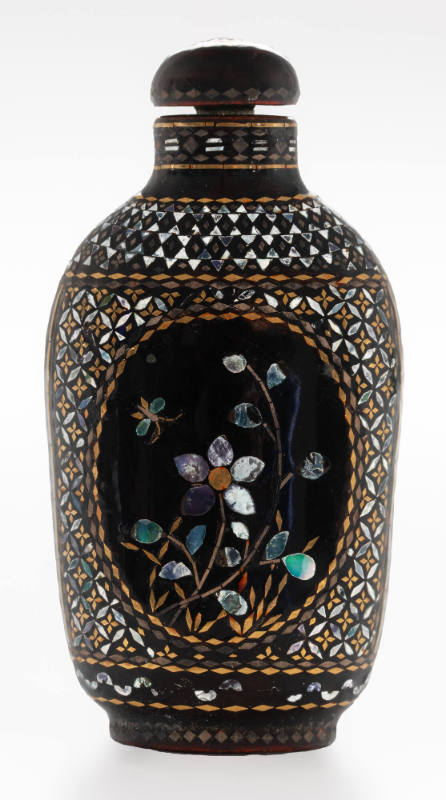
Object Details
Artist
Louis Comfort Tiffany
Date
ca. 1921
Medium
Reactive tourmaline glass
Dimensions
Height: 7 inches (17.8 cm)
Credit Line
Gift of Louis Comfort Tiffany through the courtesy of A. Douglas Nash
Object
Number
57.079
BRIEF DESCRIPTION
This Tiffany vase is made of a translucent reactive glass. Notice how it is lig(…)
BRIEF DESCRIPTION
This Tiffany vase is made of a translucent reactive glass. Notice how it is lightly striped with green and blue.
WHERE WAS IT MADE?
Tiffany glass was made at the Tiffany Glass Furnaces in Corona, located in Queens, New York.
WHO WAS THE ARTIST?
Louis Comfort Tiffany was the eldest son of Charles L. Tiffany, founder of Tiffany & Company, the New York jeweler. Tiffany was trained as a painter, studying with both George Inness and Samuel Coleman in New York and Leon Bailly in Paris. He eventually turned his attention to decorative arts and began experimenting with glass-making techniques in 1875. After success with stained glass windows and mosaics, Tiffany established the Tiffany Glass Company in 1885 and began devoting production to one-of-a-kind blown glass art objects. He soon became one of America’s most prolific designers, providing furniture, wallcoverings, textiles, jewelry and glass to some of society’s most important citizens.
HOW WAS IT MADE?
This vase was made using a blown glass technique. This particular vase is made from reactive glass, a type of glass that changes color when reheated. Reactive glass was developed by Tiffany Glass and Decorating Company. To see another Tiffany vase made from reactive glass in the Johnson Museum’s collection, search for object number 57.104 in the keyword search box.
WHY DOES IT LOOK LIKE THIS?
If you have seen the gemstone tourmaline before, you may understand why Tiffany used the term for some of his glass. This tourmaline glass vase is named after a gemstone that is found in a wide variety of colors, sometimes having more than one color in a single crystal. A source of curiosity in the 18th century, it was discovered that tourmalines had unusual electrical properties and would exhibit static electricity when warmed (called pyroelectricity).












